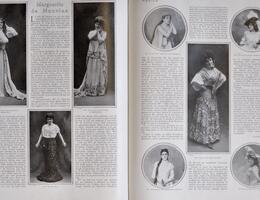Faust

Opéra en 5 actes et 9 tableaux, d'après Goethe, créé au Théâtre-Lyrique de Paris le 19 mars 1859. Nouvelle version avec ballet et récitatifs créée au Théâtre impérial de l'Opéra le 3 mars 1869.
The Faust theme featured prominently in the European Romantic imagination. Goethe’s Faust, Part One (1897-1806) and Faust, Part Two (1827-1831), translated by Gérard de Nerval in 1827 and 1840, respectively, inspired French composers. In 1828 Hector Berlioz published Huit Scènes de Faust, and sent a copy to Goethe. Many years later he returned to the work, which, revised and expanded, became La Damnation de Faust (1846). The subject also inspired Louise Bertin (1831), Adolphe Adam (1833), Pamphile Aimon, Frédéric Barbier, Henri Litolff and Hervé (Le Petit Faust, 1869, a parody of Gounod’s work) and later Claude Terrasse. Gounod discovered Faust around 1838 and probably sketched the outlines of a work dedicated to that figure then much in vogue as early as 1840. The opera was premièred at the Théâtre-Lyrique on 19 March 1859. Its libretto, by Jules Barbier and Michel Carré, was based on Carré’s play Faust et Marguerite (first performed at the Théâtre du Gymnase-Dramatique on 19 August 1850). After a successful initial run, the opera was presented at many other venues, and went through a whole series of changes. In particular, from 1860, for performances in other French theatres, recitatives replaced the original spoken dialogue. For performances in London, Gounod wrote a new Act II aria, “Even bravest heart may swell” (words by Chorley), translated for subsequent productions as “Avant de quitter ces lieux”, but never performed in Paris. Finally, a ballet had to be added in the final act before the work could be accepted by the Paris Opéra; Faust was first performed there on 3 March 1869. These various changes finally transformed Faust into a work in keeping with the conventions of grand opera. Faust was a triumph, both at the theatre in rue Le Peletier and at the Salle Garnier, and it has remained popular ever since. However, many “rejects” still remain to be rediscovered: the trio for Siébel, Wagner and Faust, for instance, and Méphistophélès’s “Maître scarabée”, the Marguerite-Valentin duet, Siébel’s “Faites lui mes aveux”, the Witches’ chorus, the symphonic Interlude, and others.
Scientific publications
Publication
Charles Gounod. Faust
Articles
The other Faust
Articles




